The Top 8 Essential Oils for The Common Cold
The Top 8 Essential Oils for The Common Cold
Overview
Common cold is mainly caused by respiratory viruses – which may spread from one infected person to others through close contact. Its
There is no real cure for a common cold, but its individual symptoms can easily be relieved or minimized by taking over-the-counter medicines and self-care practices, such as drinking loads of water, eating nutritious food, taking adequate rest, and inhaling therapeutic essential oils.
Essential oils have been historically used to help with a range of common ailments, including cold and cough, sinus infections, headaches, and seasonal allergies. Research suggests that some essential oils may possess antiviral and anti-inflammatory properties that can help reduce cold symptoms and support the immune system in fighting pathogens.
<<<Boost Your Immune System with Vitamin C>>>
Why should you use essential oils for common cold relief?
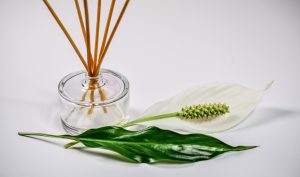
Being a plant-based medicine (and hence incredibly rich in phytochemicals), essential oils contain a variety of bioactive compounds that may possess antiviral, antibacterial, antifungal, analgesic, and anti-inflammatory properties. Together with the warming and comforting effects of aromatherapy, these compounds can significantly reduce the severity of symptoms while also supporting the immune system in fighting the infection.
What makes essential oils even more effective for common colds is their highly volatile nature, which means their active compounds can easily reach the upper and lower parts of the respiratory tract, soothing inflammations at the site and providing quick relief from congestions and headaches.
Top 8 essential oils for common colds and congestions
1. Cinnamon bark essential oil
As a warming spice with a range of medicinal properties, cinnamon has been used since time immemorial as a natural remedy for fighting seasonal colds and infections. The main volatile compound of cinnamon oil is cinnamaldehyde, which has been shown to possess antioxidant and antimicrobial abilities. When inhaled through home diffusion, it helps clean the air of germs and strengthens the immune response against infections. In one study that compared the efficacy of several essential oils, cinnamon oil was found to possess the strongest antimicrobial action against respiratory pathogens – especially when it was taken in its vapor form.
2. Eucalyptus
A primary ingredient in traditional topical ointments, eucalyptus oil is a well-regarded and popular remedy for the common cold and
3. Clove bud oil
Clove bud and its essential oil have long been used as a home remedy for common cold, cough, seasonal influenza, throat inflammation, and various respiratory ailments. The major compound (comprising about 83-95%) of clove oil is eugenol, a naturally found pain reliever that has been shown to possess antimicrobial and anti-inflammatory abilities. Being loaded with antioxidants, clove oil also lowers oxidative stress and boosts the general immunity against diseases.
<<<Reduce Inflammation In Your Body>>>
4. Tea Tree
An incredibly versatile oil that has been extensively researched for its countless benefits, tea tree oil is well-known for its antiviral, antibacterial, air-purifying, decongestant, and soothing properties. Research shows that its active compound, terpinen-4-ol, may help fight off bacteria and viruses responsible for respiratory infections. This may help reduce an inflamed response from the immune system, such as swollen tonsils, excessive sneezing, blocked sinuses, or runny nose.
5. Rosemary
Immensely popular for its alluring aroma and nervine-boosting effects, rosemary oil is a time-honored (and scientifically proven) way to alleviate common cold and respiratory problems. Due to its nourishing and rejuvenating properties, rosemary lubricates and soothes the upper respiratory tract, providing relief from throat irritation and pain. Its phytoconstituents include camphor, eucalyptol, and alpha-pinene, which are responsible for most of its expectorant and antimicrobial benefits. In a 2011 study, rosemary oil exhibited powerful antimicrobial activity against many bacteria and fungi, including staphylococcus aureus (bacteria found in the upper respiratory tract) and pseudomonas aeruginosa (causes pneumonia).
6. Oregano essential oil
Oregano oil has warming and stimulating properties that can soothe symptoms like stuffy nose, sneezing, and blocked sinuses. Its active compounds are thymol (antifungal), carvacrol (antibacterial), and rosmarinic acid (antioxidant). When taken through steam or used in warm baths, oregano quickly relieves discomfort and swelling of blood vessels, allowing clear, congestion-free breathing within minutes. Diffusing it around the home also purifies the air of allergens and boosts immunity against common ailments.
7. Basil
Extracted from a sacred, legendary herb of the mint family, basil oil is highly prized in traditional medicines for its immune-boosting, pain-relieving, soothing, and nourishing properties. Its bioactive compounds are methyl eugenol, methyl chavicol, and methyl cinnamate – which are responsible for its antimicrobial, antioxidant, expectorant, and decongestant actions. Basil oil is also a well-known nervous relaxant and can promote sleep quality if you contracted the common cold.
<<<Boost Your Immune System with Vitamin C>>>
8. Thyme
Thyme oil has antiviral and antibacterial properties that can support the immune system in fighting the common cold and influenza viruses, according to a 2020 study. Its thymol content works as an excellent expectorant to loosen the mucus, releasing pressure around the chest and providing relief from blocked nose and headaches.
How to use essential oils for relieving common cold symptoms
Steam inhalation
Inhaling essential oils through steam is the most efficient and quickest way to find relief from a stuffy nose, congested breathing, headaches, and a feeling of heaviness. Take hot water in a large bowl and add 5-8 drops of essential oils to it. Cover with a towel and deeply inhale the vapors for 5-10 minutes. Repeat the process 2-3 times a day.
Massage
Massage is considered more beneficial when the common cold is experienced in a localized area, such as a sore throat, coughing, or muscle aches. Mix 5-6 drops of essential oils with 15 ml of carrier oil and give a light massage to your chest and neck area. Try to avoid coconut oil for this purpose, as its cooling potency may worsen congestions.
 Diffusion
Diffusion
Adding 4-5 drops of antiviral essential oils to your home diffusers can support the immune system and provide relief from symptoms like dry cough or nighttime uneasiness. It also helps in purifying the indoor air of pathogens and airborne allergens.
Safety and limitations of using essential oils as a cold remedy
Essential oils are highly concentrated and should always be used in moderation. If you have never used an oil before, start with a lower concentration and then increase the dose according to your tolerability. In any case, do not exceed the recommended amounts – either for inhalation or topical application.
When diffusing indoors, try to limit the duration to 30-45 minutes and remember to keep the room well-ventilated.
For topical uses like bath or massage, essential oils should always be diluted first with a carrier oil.
<<<Boost Your Immune System with Vitamin C>>>
Final thoughts:
Essential oils cannot actually treat the common cold, but they can shorten the course of the infection and make you feel a lot better while your body fights it off. They are known and preferred for their holistic mechanism of action, which includes enhancing the body’s natural immune function, promoting relaxation, easing congestions, and providing comfort from pain and irritations. Experts believe that using a synergistic blend of essential oils may be more effective in treating common cold symptoms than single oils. So, feel free to experiment and try to work out a personalized cold-relief blend that works for you.
To Your Health!
References
- Horváth, G., & Ács, K. (2015). Essential oils in the treatment of respiratory tract diseases highlighting their role in bacterial infections and their anti-inflammatory action: a review. Flavour and fragrance journal, 30(5), 331–341. https://doi.org/10.1002/ffj.3252
- Kawatra, P., & Rajagopalan, R. (2015). Cinnamon: Mystic powers of a minute ingredient. Pharmacognosy Research, 7(Suppl 1), S1–S6. https://doi.org/10.4103/0974-8490.157990
- Ács, K., Balázs, V. L., Kocsis, B., Bencsik, T., Böszörményi, A., & Horváth, G. (2018). Antibacterial activity evaluation of selected essential oils in liquid and vapor phase on respiratory tract pathogens. BMC complementary and alternative medicine, 18(1), 227. https://doi.org/10.1186/s12906-018-2291-9
- Sadlon, A. E., & Lamson, D. W. (2010). Immune-modifying and antimicrobial effects of Eucalyptus oil and simple inhalation devices. Alternative medicine review : a journal of clinical therapeutic, 15(1), 33–47.
- Vicidomini, C., Roviello, V., & Roviello, G. N. (2021). Molecular Basis of the Therapeutical Potential of Clove (Syzygium aromaticum L.) and Clues to Its Anti-COVID-19 Utility. Molecules (Basel, Switzerland), 26(7), 1880. https://doi.org/10.3390/molecules26071880
- Carson, C. F., Hammer, K. A., & Riley, T. V. (2006). Melaleuca alternifolia (Tea Tree) oil: a review of antimicrobial and other medicinal properties. Clinical microbiology reviews, 19(1), 50–62. https://doi.org/10.1128/CMR.19.1.50-62.2006
- Bendeddouche, M. S., Benhassaini, H., Hazem, Z., & Romane, A. (2011). Essential oil analysis and antibacterial activity of Rosmarinus tournefortii from Algeria. Natural product communications, 6(10), 1511–1514.
- Kowalczyk, A., Przychodna, M., Sopata, S., Bodalska, A., & Fecka, I. (2020). Thymol and Thyme Essential Oil-New Insights into Selected Therapeutic Applications. Molecules (Basel, Switzerland), 25(18), 4125. https://doi.org/10.3390/molecules25184125



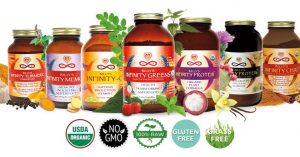
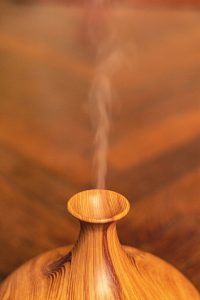 Diffusion
Diffusion







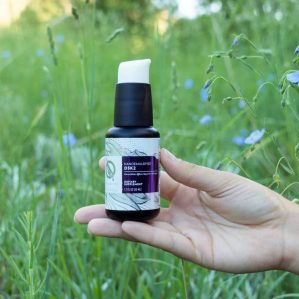
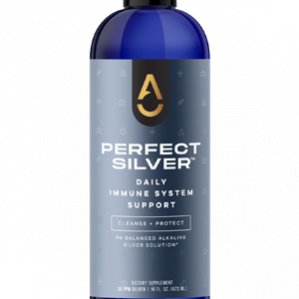
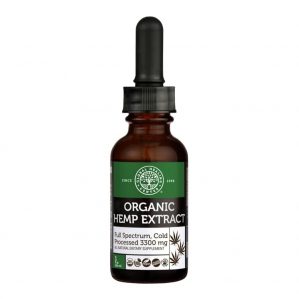

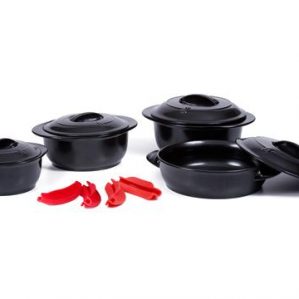











0 Comment